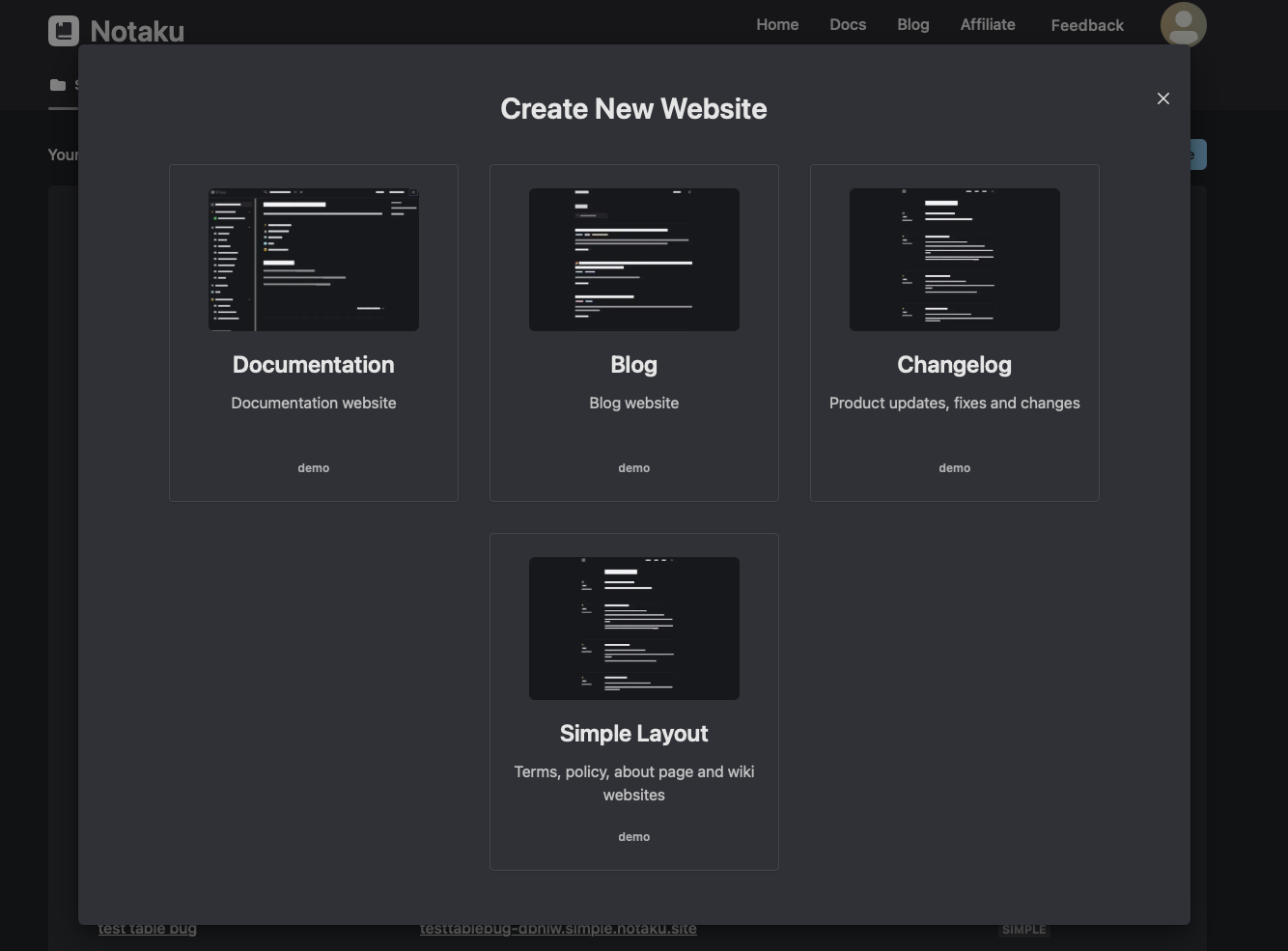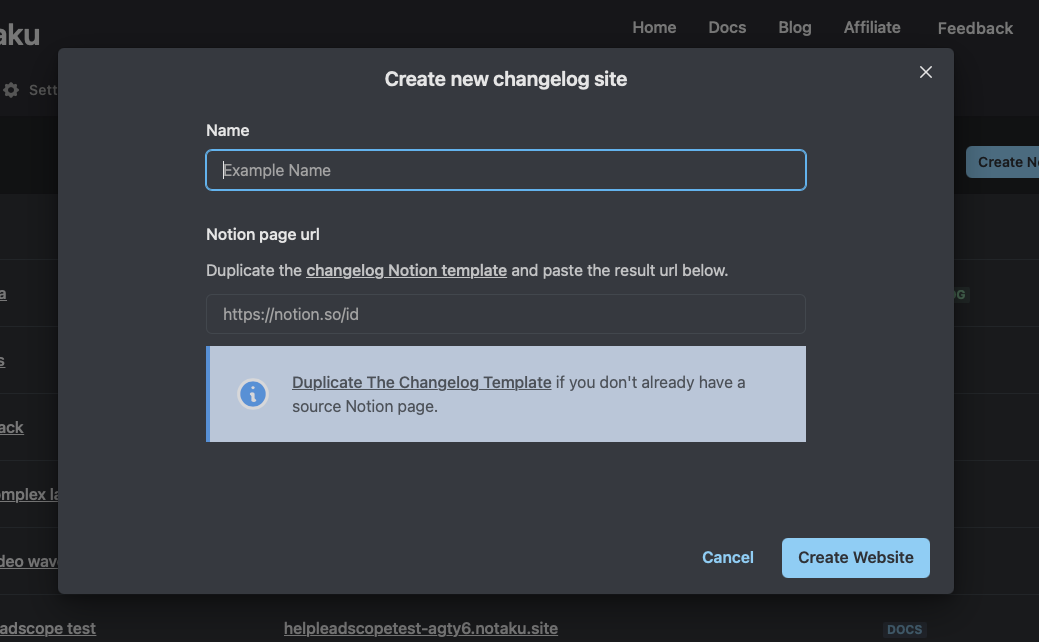Notion has one of the best writing experience on the web, wouldn’t be cool if we could use it as CMS for your company changelog website?
With Notaku you can do exactly that, Notaku will use a Notion table database as storage of your changelog posts and you can simply create a new table entry to add a new changes.
Why use Notion to create your changelog
There are many reasons:
- Notion writing experience is great
- Notion supports many block types to enrich your content: Callouts, Quotes, Code blocks, Embeds and more
- Your team already uses Notion, writing new posts takes a couple of minutes
Create the website with Notaku
Notaku is a tool to build websites with Notion, one of the websites it can create are changelogs.
Notaku has a free plan but you will need to buy a subscription if you want to add a custom domain or have higher plan limits (you can read more about Notaku plan limits here).
How to create a changelog website with Notion
- Sign up to Notaku
- Click “Create website” and choose changelog website

- Clone the blog Notion template and make the resulting page public
- Paste the Notion page url in Notaku dashboard

- Wait for sync to finish and customize the website the way you want
Notaku will publish a website based on your Notion content on a
notaku.site subdomain, later you will be able to add your own custom domain like changelog.example.com.
Customize the website
You can customize the website and add
- a custom domain
- a logo on the website header
- a link on the header to link to your main website
- footer to add misc links like social accounts

The Notion database
Notaku uses a Notion table database for your blog content, these are the fields Notaku uses for your posts
- Description, the meta description of your post
- Date, it will be the page creation date by default
- Tags, to group your posts in categories and tags
- Hidden, to hide a blog post that is still a draft
- Version, to tag your changelog posts with specific version

Creating a new changelog post
To create a new blog post you will simply add a new entry in the Notion database.
You can use all the Notion blocks you want in the page and Notaku will generate a website page from it.
RSS
Notaku also exposes an RSS endpoint in the
/rss.xml path, you can use this rss feed to integrate your blog with other tools, for example send a new email for new posts or send a new Discord message when you publish a new blog post.SEO
SEO means search engine optimization, Notaku optimizes SEO for you, all your changelog posts are server rendered HTML and have all the necessary meta tags.
Notaku will also create a siitemap.xml file for your blog, this will contain all your posts urls and it will help google indexing your website.
Notaku will also generate the social media images for Twitter, Facebook, etc based on your Notion cover

